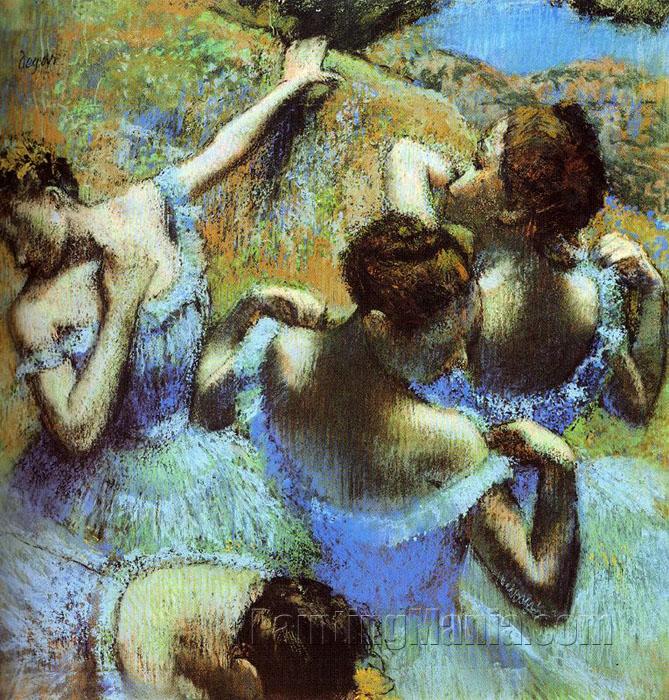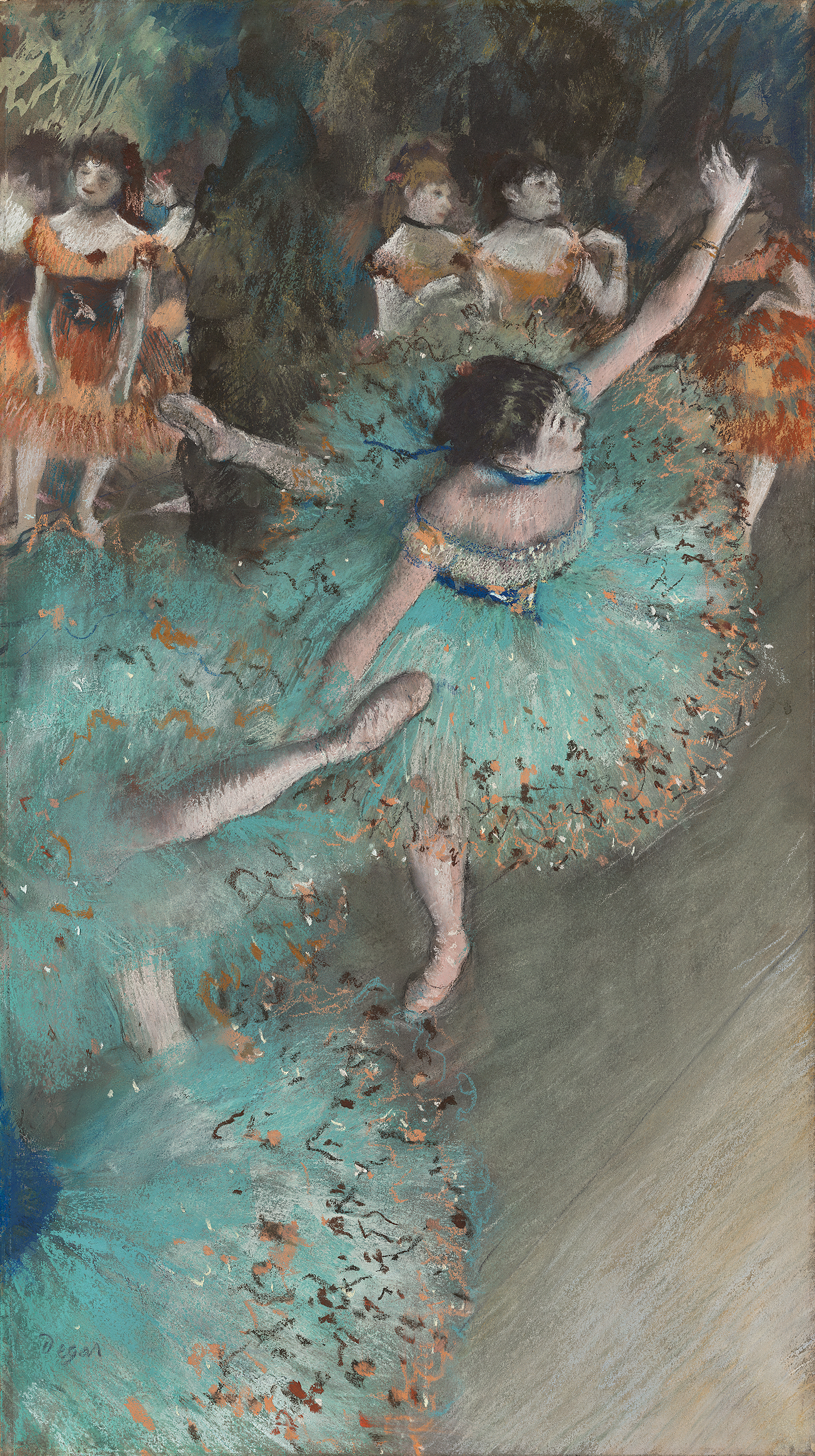Edgar Degas
Swaying Dancer
The artwork that I chose during my virtual visit at El Museo Nacional Thyssen-Bornemisza is the Swaying Dancer. The Swaying Dancer was created by a French Impressionist, Edgar Degas, from 1877 to 1879. The artwork is also known by another name of the Dancer in Green. In this particular artwork, Degas focused on the world of ballet which is exactly portrayed in the painting. Using pastels strokes to mimic the movements of the ballerinas in a fragmented technique. Degas was influenced by photography and Japanese prints in his work.
I couldn't find a specific JSTOR article that focuses on this specific art, the Swaying Dancer, but I was able to find a JSTOR article about the artist himself and his other works that are similar to Swaying Dancer. In this particular article, it goes in-depth on how Degas has begun his work in portraying ballerinas and the handling of critics on his arts. Dancer was one of Degas's first works that portrayed ballerinas and their movements. Around 1800, Impressionists revolved themselves in theatre, cafe concerts, and Opera. This is how Degas became an Impressionist himself and revolved himself with the relationship of Opera through ballet. As Degas begin to paint ballerinas in his artwork, many critics mentioned how his artwork has colors that were "artificial" and the positions of the subjects were repetitive. Also, the arms and legs of the ballerinas were getting confusing and all over the place. However, this didn't stop Degas's passion for continuing his art of the ballet world. He starts to focus on the perspective and composition of his arts; he created a new painting, Four Ballerinas Resting between Scenes. In this art, he does it differently by " [leading] the eye into depth and only a glimpse of fictive sky relieves the sense of compression" ( DeVonyar and Kendall 33). This connects to his Swaying Dancer because, in Swaying Dancer, I can tell that he really took the composition onto another level by adding the perspective and giving a central focus on the girl in the middle. Also, the stroke of his pastels gave a slight natural movement of every figure.
 |
| Four Ballerinas Resting between Scenes Edgar Degas 1898 |
My semester theme was "how humanism influences human events". In the case of Edgar Degas and handling critics, he took a human experience of criticism and transformed his artwork. I felt that as human events are continuing and there are many critics eyeing for little details, it can entirely change one's life. Degas fits this theme perfectly as he sets a new expectation for his own art by adding perspective to it. It's significant how he was able to change his artwork while continuing his passion for the ballet world because it can influence younger artists like him to focus on their own work and be free of how they want to work on it. Humanism is something that continues on every single day of our lives and it continues to inspire others; many critics would pressure on others but it doesn't stop one from continuing their passion.
Watch this video if you're interested more in Edgar Degas life
Work Cited
DeVonyar, Jill, and Richard Kendall. “‘Dancers’ by Edgar Degas.” Record of the Art Museum, Princeton University, vol. 66, Princeton University Art Museum, 2007, pp. 30–40, http://www.jstor.org/stable/20442627.
Degas, E. (n.d.). Swaying dancer (dancer in green). Museo Nacional Thyssen-Bornemisza. Retrieved December 17, 2021, from https://www.museothyssen.org/en/collection/artists/degas-edgar/swaying-dancer-dancer-green
Indigo Artbox. " Edgar Degas: 6 Minutes Art History Video." Youtube. 18 Sept. 2016, https://www.youtube.com/watch?v=YXB187Gpz6I.

Comments
Post a Comment